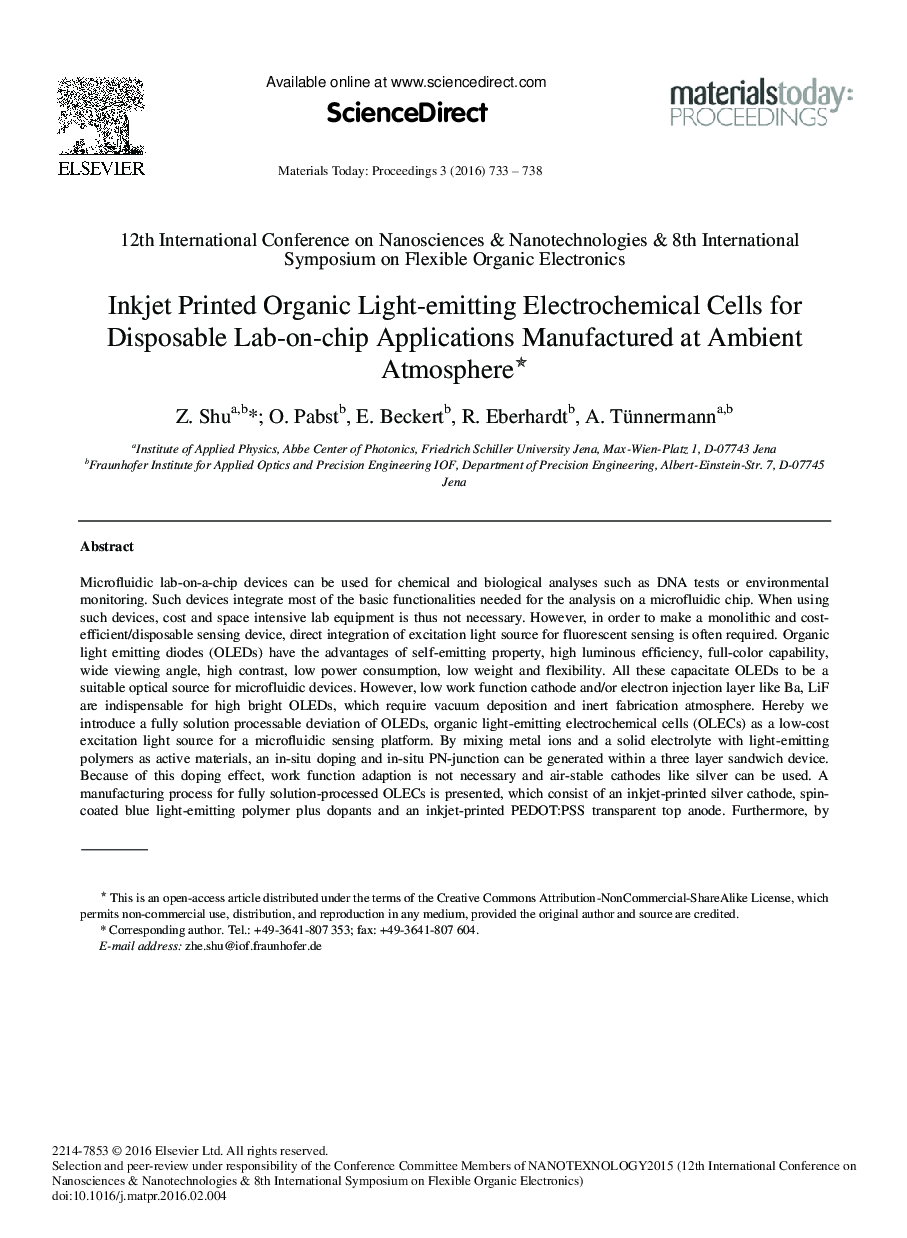| کد مقاله | کد نشریه | سال انتشار | مقاله انگلیسی | نسخه تمام متن |
|---|---|---|---|---|
| 1630892 | 1006607 | 2016 | 6 صفحه PDF | دانلود رایگان |
Microfluidic lab-on-a-chip devices can be used for chemical and biological analyses such as DNA tests or environmental monitoring. Such devices integrate most of the basic functionalities needed for the analysis on a microfluidic chip. When using such devices, cost and space intensive lab equipment is thus not necessary. However, in order to make a monolithic and cost-efficient/disposable sensing device, direct integration of excitation light source for fluorescent sensing is often required. Organic light emitting diodes (OLEDs) have the advantages of self-emitting property, high luminous efficiency, full-color capability, wide viewing angle, high contrast, low power consumption, low weight and flexibility. All these capacitate OLEDs to be a suitable optical source for microfluidic devices. However, low work function cathode and/or electron injection layer like Ba, LiF are indispensable for high bright OLEDs, which require vacuum deposition and inert fabrication atmosphere. Hereby we introduce a fully solution processable deviation of OLEDs, organic light-emitting electrochemical cells (OLECs) as a low-cost excitation light source for a microfluidic sensing platform. By mixing metal ions and a solid electrolyte with light-emitting polymers as active materials, an in-situ doping and in-situ PN-junction can be generated within a three layer sandwich device. Because of this doping effect, work function adaption is not necessary and air-stable cathodes like silver can be used. A manufacturing process for fully solution-processed OLECs is presented, which consist of an inkjet-printed silver cathode, spin-coated blue light-emitting polymer plus dopants and an inkjet-printed PEDOT:PSS transparent top anode. Furthermore, by replacing silver with ITO, a fully transparent blue OLEC is able to emit > 2500 cd/m2 light under pulsed driving mode, which fulfils requirements for simple fluorescent on-chip sensing applications.
Journal: Materials Today: Proceedings - Volume 3, Issue 3, 2016, Pages 733-738
